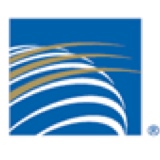Information
-
Document No.
-
Audit Title
-
Client / Site
-
Conducted on
-
Prepared by
-
Location
-
Personnel
SYSTEMS AUDIT - Certification
-
Obtain and review a copy of the current AMO certificate, and Operations Specifications. Does it include; Name, address, date and period of effectivity and scope.<br>Is the AMO in the Operator Opspecs? Is the AMO aware of this information?
-
Has the vendor designated an employee as the Accountable Manager, with appropriate qualifications, acceptable to the Authority if applicable?
-
Does the roster (Do the rosters) identify all management, supervisory and inspection personnel and all personnel authorized for<br>return-to-service?
-
Does the repair station have an employment summary for all personnel listed on the repair station roster(s)?
-
Does the vendor have an local approved and active anti-drug and alcohol misuse prevention program?
-
The Operator utilizes appropriately licensed/authorized (include Local, validated and M-012) maintenance personnel to sign the maintenance release.
-
Does the Operator specifies, in the maintenance agreement, measurable maintenance safety and quality standards required to be fulfilled by the respective external maintenance organization. Is this agreemet under IATA standards?
SYSTEM AUDIT - Quality Manual
-
Does the vendor have an Repair Station (or equivalent) Manual and does it meet the requirements of the Local Authority? If the organization that does not hold an approval document issued by the Authority, the Operator shall ensure such maintenance organization has been recognized by the Authority.
-
Does the vendor have a Repair Station (or equivalent) Manual that contains the following information:
-
A general description of the scope of work authorized and description of the organizations facilities.
-
A description of the organization procedures and quality or inspection system (Incoming inspection, Shelf Life program and Calibration and equipment maintenance)
-
Names and duties of the responsible personnel (Accountable Manager) and whose responsibilities (Supervisor and Inspectors) are to ensure that maintenance is carried out in accordance with the Repair Station Manual (or equivalent)
-
A description of the procedures used to establish the competence of maintenance personnel (Training).
-
The process for authorizing personnel to sign the maintenance release , the scope of their authorization (Roster) and procedure for preparing the maintenance release.
-
A description of the methods used for the completion and retention of the Operators maintenance records, including procedures for retaining back-up records;
-
A description of any additional procedures for complying with the Operators maintenance procedures and requirements, service information reporting requirements (reporting defects) and distribution of all necessary airworthiness data (technical data) from the type certificate holder or type design<br>organization.
-
Does the vendor have an internal audit and surveillance functions? Does it assure appropriate corrective action?
-
A process to amend the Repair Station Manual (or equivalent) as necessary to keep the information contained therein up to date and a process to furnish copies of all amendments promptly to all organizations or persons to whom the manual has been issued.
SUPPORT PROCESS - Receiving Inspection
-
Does the vendor verify that the identifying data (P/N, S/N, nomenclature, mod. No.) on the documentation and the data plate match? And maintains traceability certification on all parts and raw materials?
-
Does the vendor have a quarantine area for rejected parts and materials awaiting disposition?
SUPPORT PROCESS - Material Control Process
-
The Operator has the necessary parts and material to perform the work for which the maintenance organization has been approved.
-
Are sensitive parts and equipment (oxygen parts, o-rings, electrostatic sensitive devices, temperature/humidity controlled item, etc.) properly packaged, identified and stored to protect from damage and contamination?
-
Appropriate warning and caution signs and decals are placed in areas where ESDs are handled
-
Are parts and materials correctly identified and properly stored? Are MSDS available?
-
Are parts and material properly protected from damage and deterioration?
-
Are flammable, toxic or volatile materials properly identified and stored?
-
Are high pressure bottles correctly labeled, properly stored and secured?
-
Does each shelf life item have the shelf life expiration limit displayed?
SUPPORT PROCESS - Calibration Control
-
The Operator has the necessary equipment and tools to perform the work for which the maintenance organization has been approved. If tools and equipment belong to another enterprise check for maintenance agreement.
-
Is there a system to identify each tool in the program, its calibration frequency, and its calibration due date?
-
Did the sample checks of the calibrated tooling indicate that the tooling is within calibration limits?
-
Does the vendor have a procedure for identifying, controlling, and/or preventing out-of-service and due-for-calibration tools and equipment from being used?
-
Does the vendor have a procedure to control the calibration of personal tools?
-
Do calibration records:
-
Show date calibrated?
-
Show calibration due date?
-
Identify individual or vendor that performed calibration or check?
-
Contain a calibration certificate for each item calibrated by an outside agency?
-
Record details of adjustments and repairs (Repair History)?
-
Show the P/N, S/N, and calibration due date of the standard used to perform the calibration?
-
Have an operating manual and maintenance manual for the equipment?
-
Perform maintenance and servicing per the manual?
SUPPORT PROCESS - Facilities
-
The Operator has a process for segregating aircraft serviceable parts, aircraft non-serviceable parts, and non-aircraft parts.
-
Does the vendor have:
-
Sufficient work space and areas for the proper segregation and protection of articles?
-
Suitable racks, hoists, trays, stands, and other segregation means for the storage and protection of all articles?
-
Ventilation, lighting, cleaning, control of temperature, humidity and other climatic conditions sufficient and appropriate to ensure personnel perform maintenance.
-
Areas for receiving and for shipping customers units with adequate space, lighting, shelving, security and fire protection to accommodate customers units in a manner that will preclude damage, loss, and theft?
-
Communications equipment/software, such as telephones, facsimile machines, email and others; Does that enables and ensures an effective exchange of operationally relevant information throughout the company.
-
Are components returned in an appropriate shipping container or as specified by the customer?
-
The housing and facilities shall provide adequate security and protection from fire.
-
Fire protection devices and systems shall be inspected periodically.
-
Fire fighting equipment and its locations shall be well identified and maintained in serviceable condition.
-
Walkways, doors, and fire extinguishers shall be clear of obstructions and easily accessible.
-
Are fluid dispensing cans and servicing units properly identified?
SUPPORT PROCESS - Training
-
Did the sampled names indicate the mechanics, inspectors and supervisors were properly trained (according Operator Manual), authorized (by Local Authority and Operator Authority) and certificated (by Airlines), if required, for the work they perform?<br><br>NOTE(ONLY FOR COLOMBIA): Does the vendor approved for COMAT? (DG Training, Labels and Shipping Declatation)<br>NOTE (ONLY FOR COLOMBIA): A/C Recurrent training, GMM, RAC, Fueling Manual and logbook apply every two years.
SUPPORT PROCESS - Technical Data
-
Does the vendor have a system to ensure technical data is current? Does the vendor have records of manual revisions? Read and sign records available?<br><br>NOTE: (ONLY FOR COLOMBIA): Check AMM access.
-
Does the vendor have a system to control working copies of manuals to ensure they are revised with the masters?
-
Does the vendor have all forms necessary for the work they peform? (Non Routine, Difered Itemf formats, Logbooks, etc.)
SUPPORT PROCESS - Records
-
Are the vendors work records complete, in order, and legible?
-
Do the work package records contain:
-
The description of the work performed or reference to data acceptable to the administrator?
-
The date of completion of the work performed?
-
The name of the person performing the work?
-
The name of the person inspecting the work?
-
The signature, certificate number of the person returning the article to service?
-
Are all test and inspection records in work package?
-
Does the vendors record keeping system (secure and dry storage) and retention time according to local and operator regulation?
WORK PROCESS - Maintenance Observation/Sampling
-
Does the vendor properly execute customers required inspections (RII)?
-
Do personnel follow the return to service procedures?
CLOSING - Sign Off
-
Add signature
-
Checklist based in the MNT-013 STATIONS MNT CHECKLIST from AQD - Last Amended 13-Mar-12.











